SMART Dehydrator-Buying
Last week I talked about making fruit and vegetable powders using a dehydrator. Lots of positive comments came into my email regarding the idea of dehydrating, so I thought this week we’d keep the dehydrator talk going.
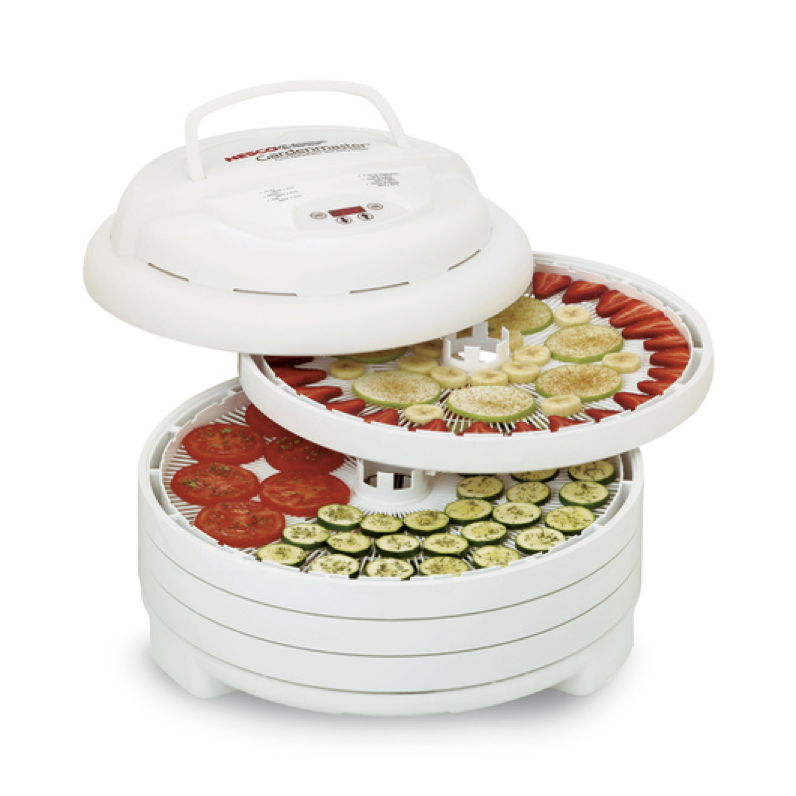
Coincidentally, I just received an article from Linda at Food Storage Moms, sharing some things we ought to know when considering a dehydrator purchase. Here’s what she said:
First, decide on your budget—how much are you willing to spend? There are brands for all budgets today. Some come with more features than others, but a basic dehydrator does the job just fine.
From there, research the various brands available. You want to especially look at customer reviews for brands that have been around for a few years (such as Excalibur, Nesco Gardenmaster, Cosori). If a company has sold dehydrators for years and has great reviews, then their reputation says something and their products are likely worth buying.
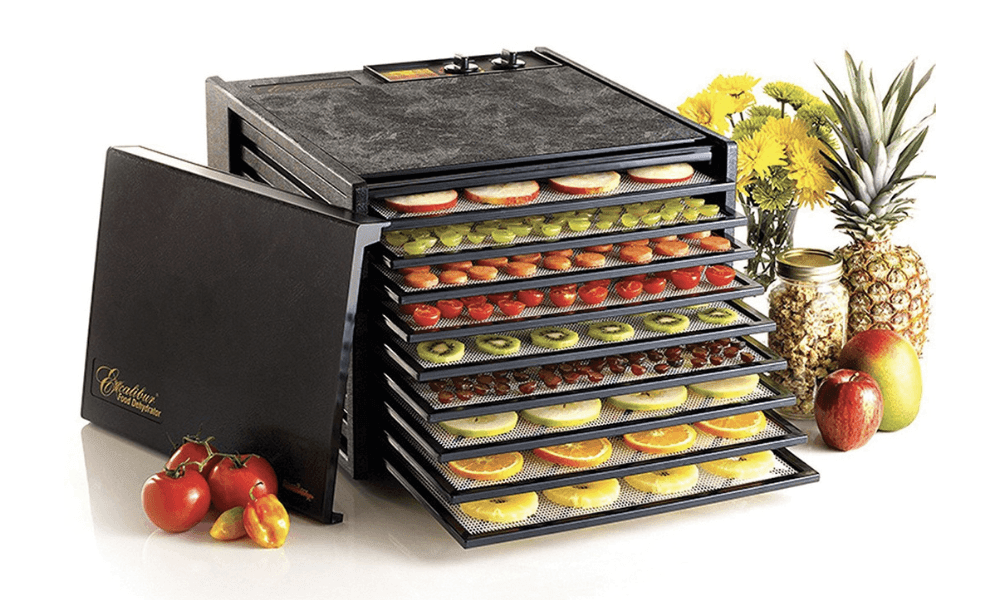
Drawing from your research, make a list of the features that are most important to you. Look for things like a convenient airflow system, ideal thermostat, and neat trays that you can use to dehydrate a variety of foods simultaneously. Have your list ready when shopping. Linda said she cared most about the unit’s capacity and wattage. For me, I also cared about capacity as well as ability to regulate temperature and having a built-in timer (I wanted to be able to “set and forget”).
Check on noise level. Some can be very loud when operating. Noise level should be a factor included in the specifications listed about the product. And you’ll also get a good feel for this issue as you read reviews (it’s commonly discussed).
Look for Stacking Trays. Stackable trays make it possible to dehydrate more food at a faster pace. One thing to remember, be sure to plan your dehydrating according to what you want to dry. Different foods (such as meat and fruit, for instance), shouldn’t be dehydrated at the same time since they take different temperatures and times.
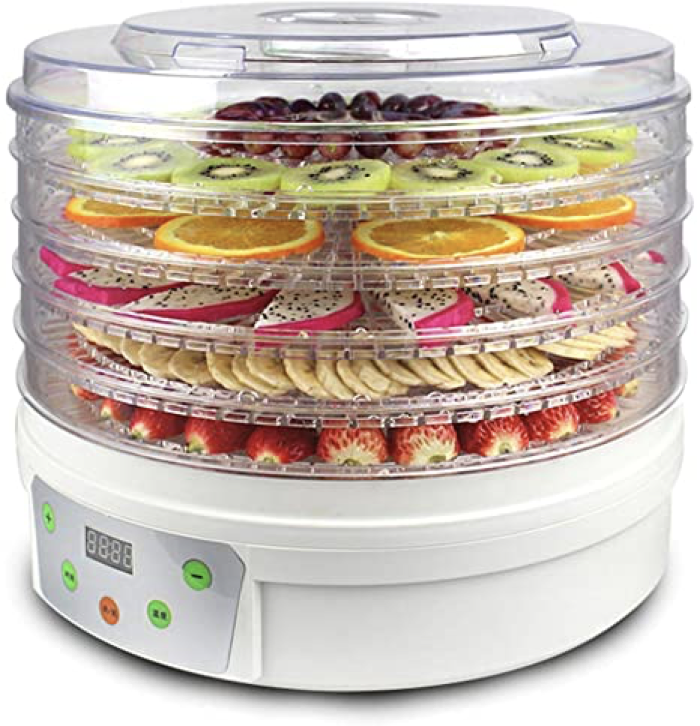
Look for a thermometer/temperature/timer. A thermometer/temperature gauge is important. You’re going to need the thermometer to keep track of the temperature inside the dehydrator because some foods dehydrate better at specific temperatures. If it doesn’t have a thermometer, it’s a real inconvenience.
Look for an adjustable thermostat. Can you adjust the thermostat in the food dehydrator to your liking? It’s a question that you should ask before you buy. You may need to adjust the position of the thermostat at times while dehydrating certain foods.
Consider its size and weight. You may not want another bulky appliance in your kitchen, especially if you already have many of them, including a microwave, toaster oven, and air fryer. If that’s the case for you, then a more compact and lightweight dehydrator may suit you best.
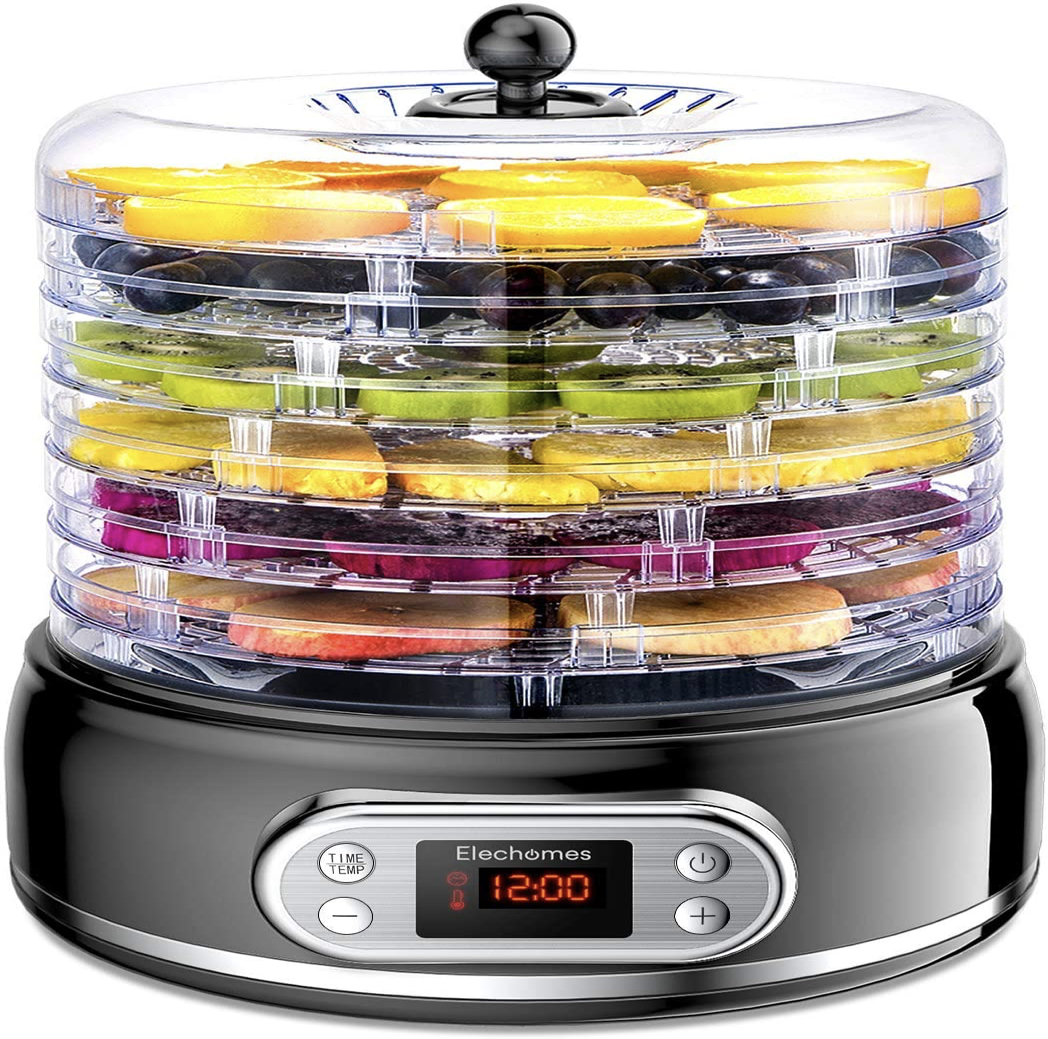
Determine how much you want to dehydrate at a time. This information is also part of the appliance specifications (usually). Bigger appliances tend to have more space, but smaller options still offer enough interior space with stackable trays that may meet your needs.
Make sure it’s able to maintain the food’s nutritional integrity. This vital information is also included (or should be) in the specifications and product details list. Anytime a company can claim their appliance maintains nutritional integrity, they’ll say so, because this is a big deal. To maintain a food’s enzyme quality need to be able to dehydrate at a low temperature (between 105 and 120 degrees). If a dehydrator doesn’t have settings this low, you may want to pass on it.
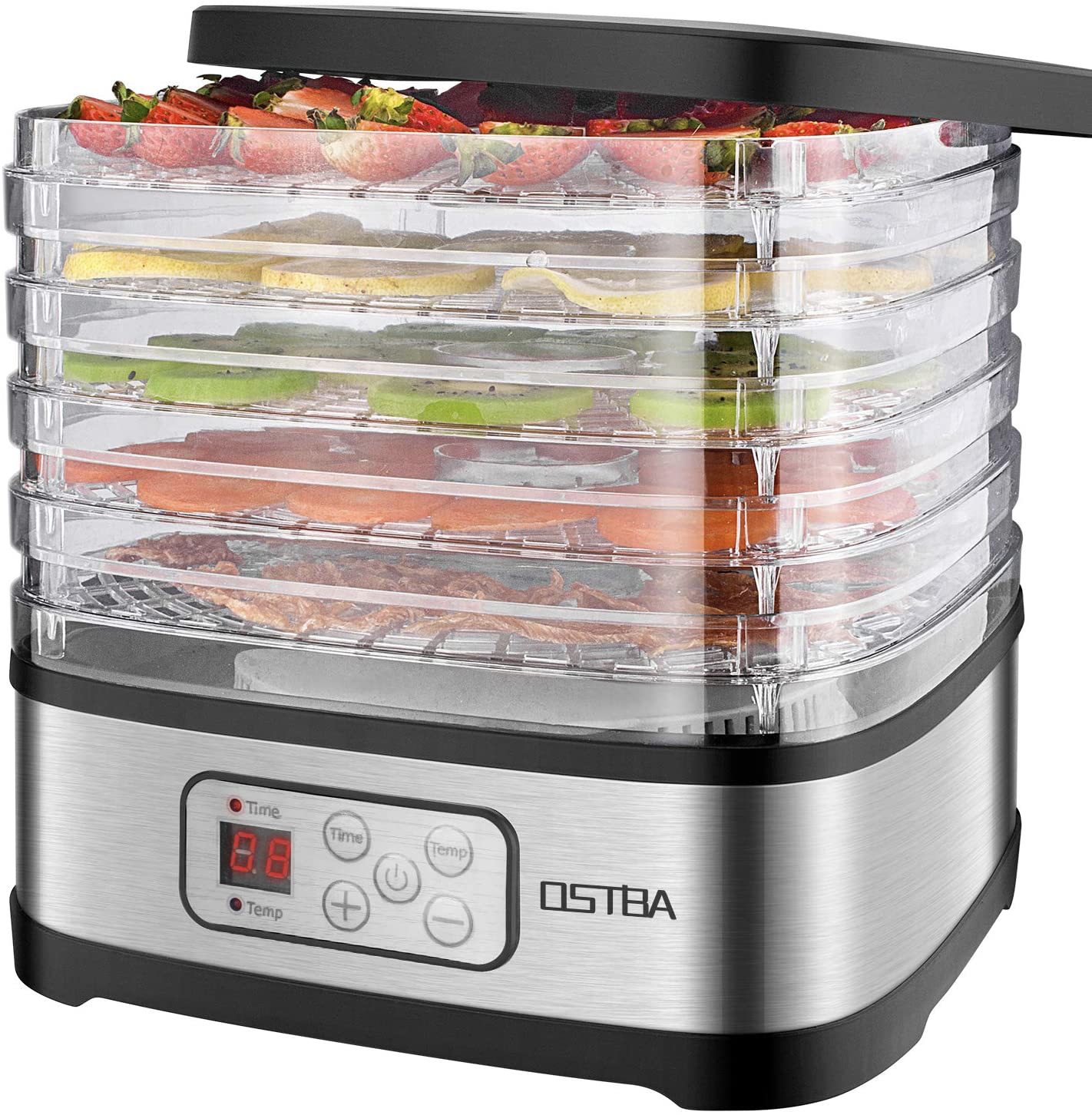
Look to see if its shelves and trays are easy to clean. This is self-explanatory, right? We all know if something’s hard to clean, we don’t use it as often as we ought to. Again, this issue is often discussed in the customer review section on the product’s website.
Check on how long it takes to dehydrate a typical load of food. Some take longer than others. If you’d like to get the dehydration process done as quickly as possible, you’ll want to look for a highly efficient option.
Look to see how energy efficient it is. Finding an energy-efficient dehydrator is essential. While the idea is to save food, you obviously don’t want to waste a lot of energy in the process. The good news is that several brands offer energy-efficient options.
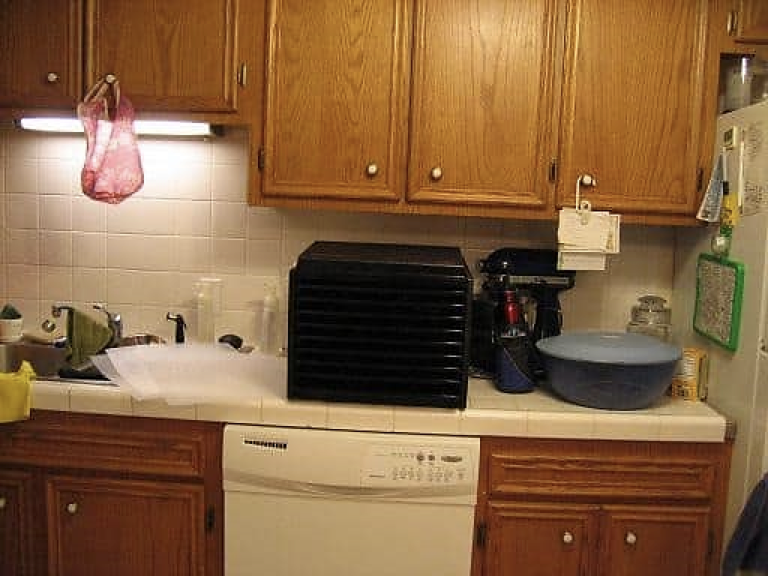
Lastly, before buying, determine where you’ll put it once it’s home. First, make sure you have the right amount of space for the one you want. If space constraints are an issue, then you’ll either need to choose a smaller, more compact model or rearrange things (and maybe eliminate some things) to make room for the one you prefer.

Coincidentally, I just received an article from Linda at Food Storage Moms, sharing some things we ought to know when considering a dehydrator purchase. Here’s what she said:
First, decide on your budget—how much are you willing to spend? There are brands for all budgets today. Some come with more features than others, but a basic dehydrator does the job just fine.
From there, research the various brands available. You want to especially look at customer reviews for brands that have been around for a few years (such as Excalibur, Nesco Gardenmaster, Cosori). If a company has sold dehydrators for years and has great reviews, then their reputation says something and their products are likely worth buying.

Drawing from your research, make a list of the features that are most important to you. Look for things like a convenient airflow system, ideal thermostat, and neat trays that you can use to dehydrate a variety of foods simultaneously. Have your list ready when shopping. Linda said she cared most about the unit’s capacity and wattage. For me, I also cared about capacity as well as ability to regulate temperature and having a built-in timer (I wanted to be able to “set and forget”).
Check on noise level. Some can be very loud when operating. Noise level should be a factor included in the specifications listed about the product. And you’ll also get a good feel for this issue as you read reviews (it’s commonly discussed).
Look for Stacking Trays. Stackable trays make it possible to dehydrate more food at a faster pace. One thing to remember, be sure to plan your dehydrating according to what you want to dry. Different foods (such as meat and fruit, for instance), shouldn’t be dehydrated at the same time since they take different temperatures and times.

Look for a thermometer/temperature/timer. A thermometer/temperature gauge is important. You’re going to need the thermometer to keep track of the temperature inside the dehydrator because some foods dehydrate better at specific temperatures. If it doesn’t have a thermometer, it’s a real inconvenience.
Look for an adjustable thermostat. Can you adjust the thermostat in the food dehydrator to your liking? It’s a question that you should ask before you buy. You may need to adjust the position of the thermostat at times while dehydrating certain foods.
Consider its size and weight. You may not want another bulky appliance in your kitchen, especially if you already have many of them, including a microwave, toaster oven, and air fryer. If that’s the case for you, then a more compact and lightweight dehydrator may suit you best.

Determine how much you want to dehydrate at a time. This information is also part of the appliance specifications (usually). Bigger appliances tend to have more space, but smaller options still offer enough interior space with stackable trays that may meet your needs.
Make sure it’s able to maintain the food’s nutritional integrity. This vital information is also included (or should be) in the specifications and product details list. Anytime a company can claim their appliance maintains nutritional integrity, they’ll say so, because this is a big deal. To maintain a food’s enzyme quality need to be able to dehydrate at a low temperature (between 105 and 120 degrees). If a dehydrator doesn’t have settings this low, you may want to pass on it.

Look to see if its shelves and trays are easy to clean. This is self-explanatory, right? We all know if something’s hard to clean, we don’t use it as often as we ought to. Again, this issue is often discussed in the customer review section on the product’s website.
Check on how long it takes to dehydrate a typical load of food. Some take longer than others. If you’d like to get the dehydration process done as quickly as possible, you’ll want to look for a highly efficient option.
Look to see how energy efficient it is. Finding an energy-efficient dehydrator is essential. While the idea is to save food, you obviously don’t want to waste a lot of energy in the process. The good news is that several brands offer energy-efficient options.

Lastly, before buying, determine where you’ll put it once it’s home. First, make sure you have the right amount of space for the one you want. If space constraints are an issue, then you’ll either need to choose a smaller, more compact model or rearrange things (and maybe eliminate some things) to make room for the one you prefer.
Sources:
- www.enasco.com
- www.sousvideguy.com
- www.fgreedandsons.com
- www.amazon.com
- www.kitchenstewardship.com
 Alice Osborne
Alice Osborne
Weekly Newsletter Contributor since 2006
Email the author! alice@dvo.com
